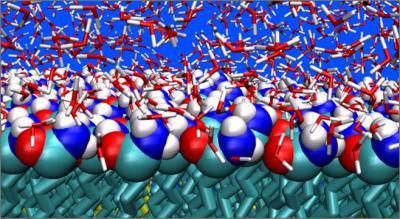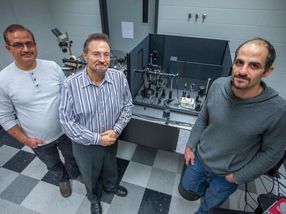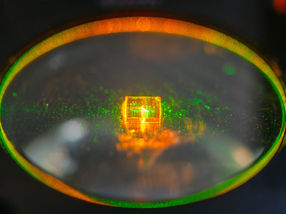Oxford Instruments achieves the first 22 Tesla at 4.2 Kelvin fully superconducting magnet using LTS and HTS materials
Oxford Instruments has achieved 22.07 Tesla in a fully superconducting magnet operating at 4.2 Kelvin, the result of continuing efforts into studying the application of HTS high temperature superconducting and LTS low temperature superconducting technology in the manufacture of high magnetic fields.
The 22 T magnet was built by integrating two HTS coils into a 20 T, 78 mm wide bore magnet. The latter was a first achievement in itself as it is the first fully superconducting magnet at 4.2 K using only LTS materials with such a wide bore. A major benefit of this magnet is that it can accommodate HTS insert coils in the drive to achieve a fully superconducting 25 to 30 T magnet system. Such high fields are needed by the research community in physical and life sciences to explore new areas in nanotechnology and bioscience. At present such magnetic fields can only be achieved using resistive magnets which have very high power consumption and require specialised infrastructure to allow their operation.
The two HTS coils are 10 cm high concentric solenoids made from 1.5 mm diameter Bi-2212 round wire. Each coil has six layers and was manufactured using the wind and react technique and then epoxy potted under vacuum. The inner diameters of the two coils are 25 and 55 mm respectively. The 20 Tesla wide-bore outer magnet was made from NbTi and high-performance RRPTM Nb3Sn wires. Both LTS and HTS wires were developed and supplied by Oxford Superconducting Technology (OST), part of the Oxford Instruments Group.
Until recently wide bore magnets above 18 T could only be achieved by super-cooling the magnet to 2.2 K. Operating at 4.2 K (the temperature of liquid helium at atmospheric pressure) significantly reduces the liquid helium consumption. This is crucial, as the cost of liquid helium has substantially risen over the last few years. It also allows the use of a recondensing cooling solution, using a mechanical cryocooler (such as a pulse tube refrigerator), reducing the helium consumption even further by re-liquefying liquid helium as it evaporates from the magnet vessel.
The successful operation of the 22 T magnet is a major step forward in the IMPDAHMA project to develop an integrated modelling package for the design of advanced HTS magnet applications. The magnet will provide a platform for the high field measurements of HTS coils that are necessary to develop the complex HTS modelling tool. IMPDAHMA is a three-year research and development collaboration project partially funded by the Technology Strategy Board in the UK and led by Oxford Instruments NanoScience, in collaboration with Vector Fields Ltd and The Institute of Cryogenics at Southampton University.
Most read news
Organizations
Other news from the department science

Get the analytics and lab tech industry in your inbox
By submitting this form you agree that LUMITOS AG will send you the newsletter(s) selected above by email. Your data will not be passed on to third parties. Your data will be stored and processed in accordance with our data protection regulations. LUMITOS may contact you by email for the purpose of advertising or market and opinion surveys. You can revoke your consent at any time without giving reasons to LUMITOS AG, Ernst-Augustin-Str. 2, 12489 Berlin, Germany or by e-mail at revoke@lumitos.com with effect for the future. In addition, each email contains a link to unsubscribe from the corresponding newsletter.
























































